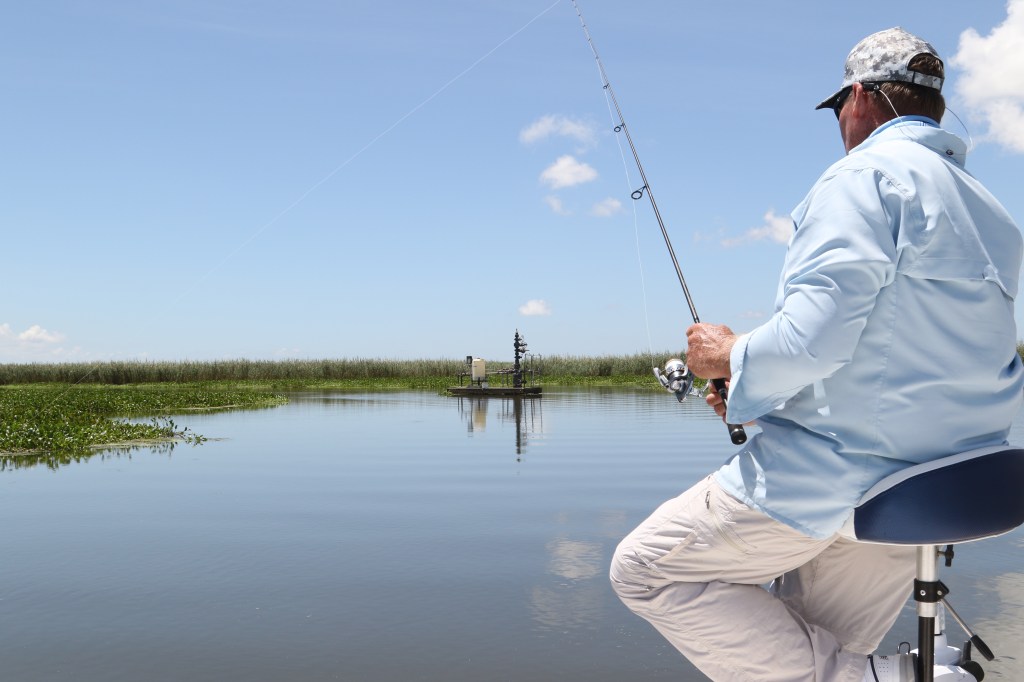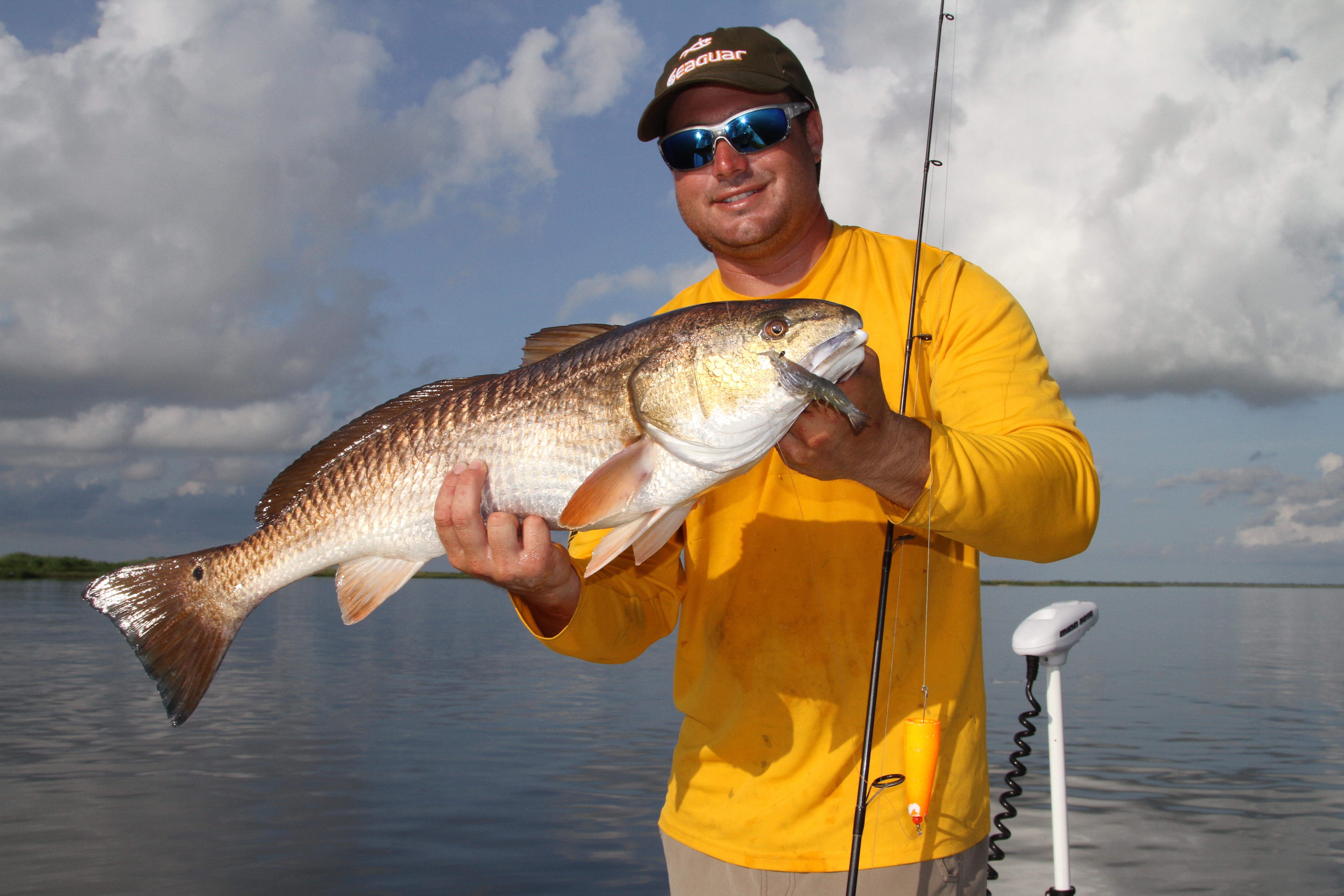
Pack your bags. We got a good one.
Louisiana’s famed Mississippi River Delta is the magnet that draws fishing types of all backgrounds to an absolute wonderland of angling opportunity steeped in Cajun culture and emanating a relaxed ambiance born of soul-pleasing remoteness.
With immeasurably vast habitat constantly fed by the Mighty Mississippi and it’s labyrinth of natural waterways, as well as the network of canals dug decades ago by the oil and natural gas drilling industry, the Delta presents a 24/7 food production facility.
Pumping out voluminous amounts of shrimp, crawfish, crabs, and numerous finned forage species, this iconic region of Southeast Louisiana hosts an impressive sport-fish lineup including redfish, speckled trout, flounder, black drum, sheepshead, jack crevalle, and largemouth bass.
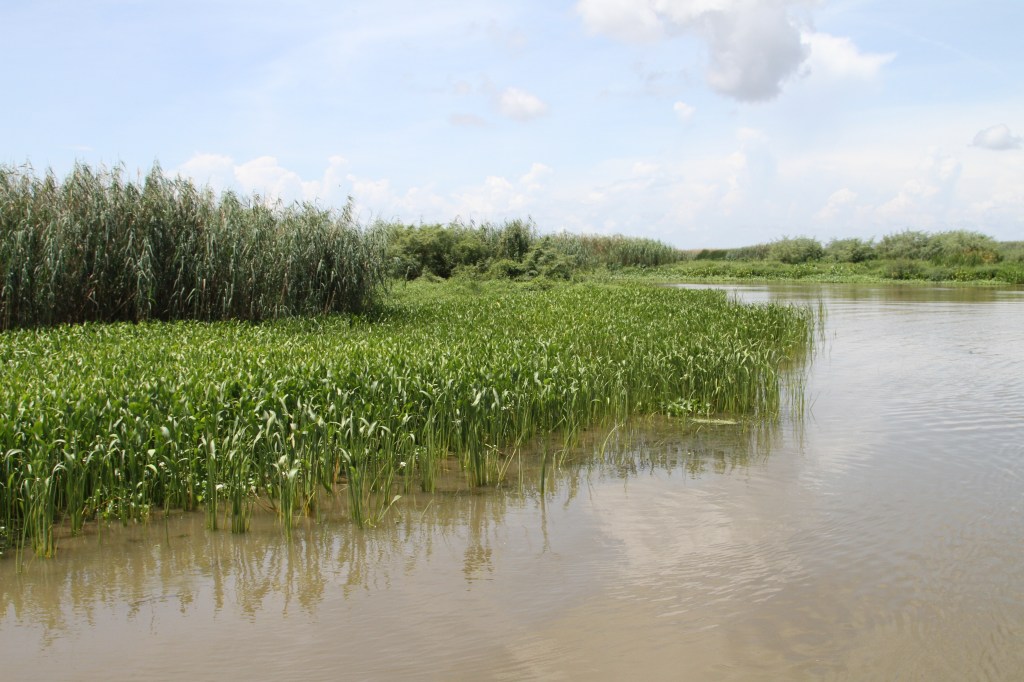
The layout
Curving south of New Orleans, the Mississippi River swings eastward, then makes a northwest turn before dropping south at a historic point known as English Bend. Hydrologically speaking, the Mississippi Delta region comprises a much larger area, but from a fisherman’s perspective, this is about where the destination colloquially known as “The Delta” begins.
Running past Belle Chasse, Highway 23 is the main north-south road traversing several fishing towns like Myrtle Grove, Port Sulfur, Empire, Buras, and the last populated port — Venice. To the West, anglers often head to Lafitte, while the northeast Delta region welcomes folks to Delacroix and Hopedale.
The strength of the Mississippi River enters the Gulf of Mexico through a three-way split called the Head of the Passes, about 11 miles downstream of Venice. Here, the river branches into Southwest Pass, South Pass and Pass a Loutre. Decades ago, the U.S. Army Corps of Engineers built levees and retaining walls for flood control and navigational consistency, but occasional breaks provide marsh access.
Within the marsh, anglers find multiple Gulf passes, sloughs, bayous and pipeline canals linking through some of the most bountiful habitat you’ll ever experience. You gotta see it to feel it, but once you do, you’re instantly hooked.
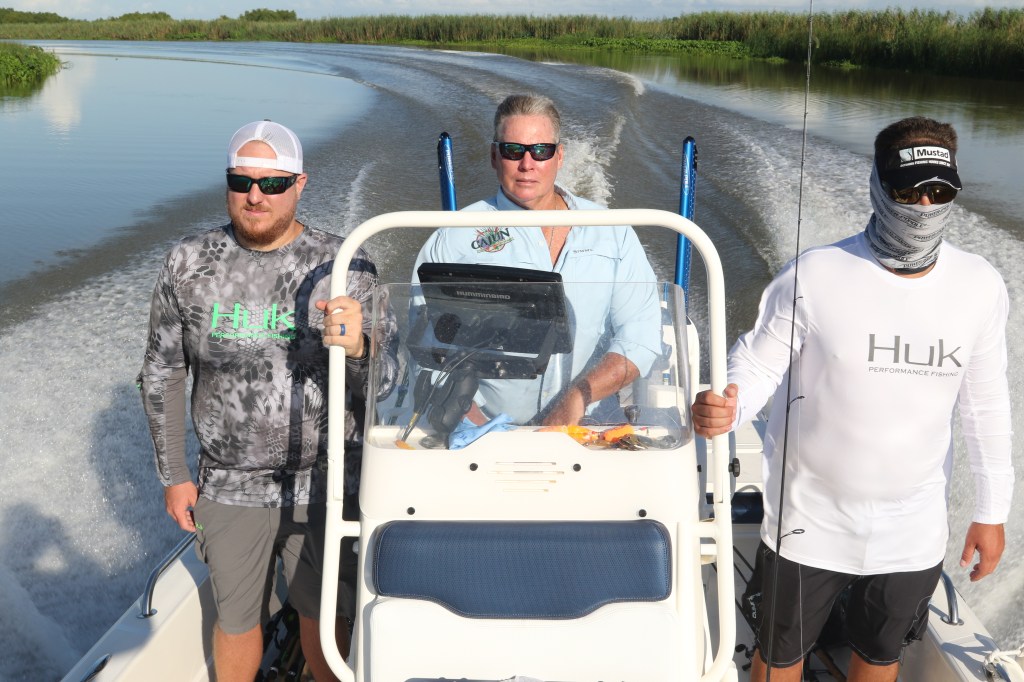
How to find ‘em
Redfish and speckled trout typically account for the majority of the Delta action. Largemouth bass also make a strong showing in the weedy interior sections far from the saltwater reaches, but for simplicity, we’ll stick with the traditional marine species.
Without question, the best way for newcomers to enjoy the Delta bounty is with a local guide. They know the safe navigational routes, seasonal fish patterns and the most productive areas, so a day or two on a hired vessel is time and money well spent.
That being said, if ever there was a fishery where an absolute beginner could trailer a boat, pick a direction and have a solid chance at catching dinner, this is the place. It’s not always easy, but this is without question the most user-friendly fishing destination in the continental U.S.
That premise anchors in the knowledge of a few fish-friendly features. It’s typically a matter of finding the most abundant feeding opportunities, so look for these and you’ll find fish.
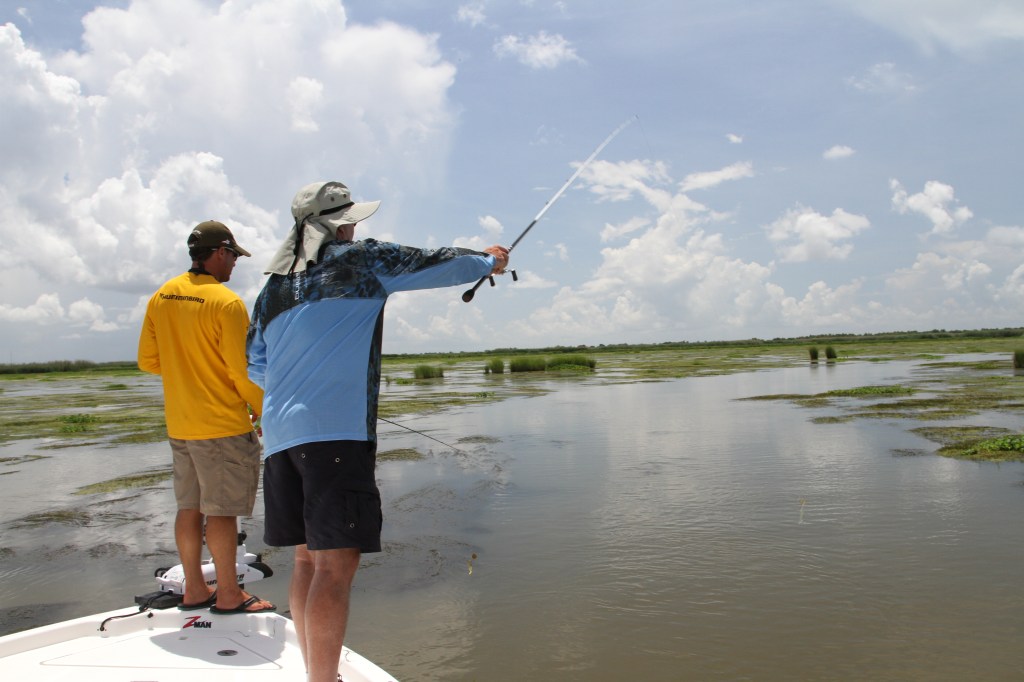
Marsh Maze: The diverse array of submersed and emergent vegetation — hydrilla, Roseau cane, hyacinth, etc. — generally known as “the marsh” is where much of the action goes down. You’ll find loads of jumbo redfish, big speckled trout, jacks, giant black drum and sharks in the coastal bays and around the barrier islands, but if you never leave the marsh, you’ll never lack for opportunity.
(Note: Juvenile redfish live in the marsh until they reach about 28 inches. After that, adults known as “bull reds” move to the outer bays and seasonally move offshore to spawn.)
Mind the tides to avoid getting stuck on a mud bank, but also embrace this truth: It all looks fishy — and it can be — but Delta denizens follow the same principles the guide fish anywhere. They want cover/structure for feeding and safety, they want quick access to the security of deep water and they’ll always use points, cuts, turns and other water directing features for feeding efficiency.
Hard bottom: — While soft, muddy bottom dominates the Delta, sandy patches, oyster bars and scattered shell bottom concentrate food sources. Jetty rocks at any of the passes do the same.
And don’t overlook the various drilling industry structures scattered throughout the marsh. The various gauges and access points, sometimes surrounded by docking platforms, attract fish like a stump-in-the-pond.
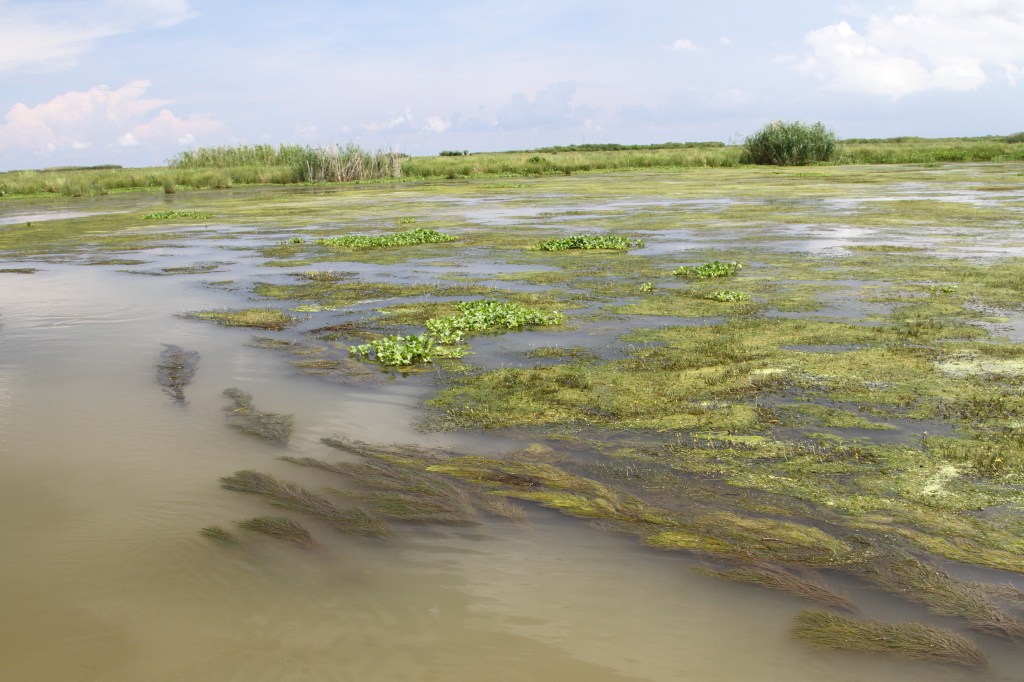
Runouts: Incoming tides allow redfish and other predators access to shallow marsh vegetation, but when the tide falls, the outgoing water funnels through concentrated drain points. Filtered by the vegetation, this cleaner water tends to gather baitfish at the mouth of runouts, while tide-born baitfish and crustaceans enhance the appeal.
Also, breaks in long lines of Roseau cane create similar flow-through points. In any case, expect to find redfish and others stacked around such food funnels.
Duck Ponds: So named for their fall attraction to migratory waterfowl, these inner pools encircled with vegetation often capture schools of menhaden, mullet and other baitfish. Redfish feed at their leisure, while also grazing the shallows for crustaceans and invertebrates. (Great sight casting opportunities.)
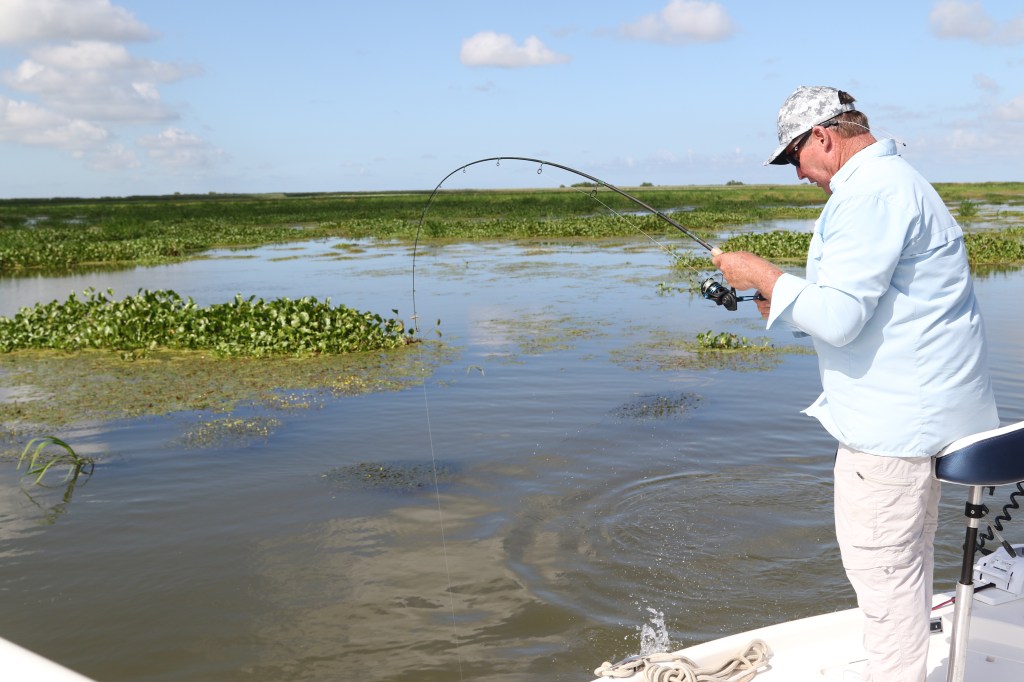
Signs of Life: This one applies heavily to redfish, as these are probably the Delta’s least subtle fish. When red — especially the big bulls — move across deeper flats, the resulting surface disturbance resembles a cattle stampede.
In shallow water, look for juvenile reds making less dramatic wakes, pushes and boils. Clear days and cleaner marsh water may reveal full fish outlines, but when reds tilt downward to grab a shrimp or crab, their tails break the surface as the fish wiggles and wobbles to maintain its balance.
“Tailing,” as it’s known, definitely indicates feeding fish, but with all of these visuals, stealth and patience are the keys to capitalizing.
Aerial Indicators: Birds hovering near the surface or diving in open bays and saltwater lakes often indicate shrimp or baitfish pushed topside by reds and/or trout. When the birds find these opportunities, the fish are chewing, so follow their lead.
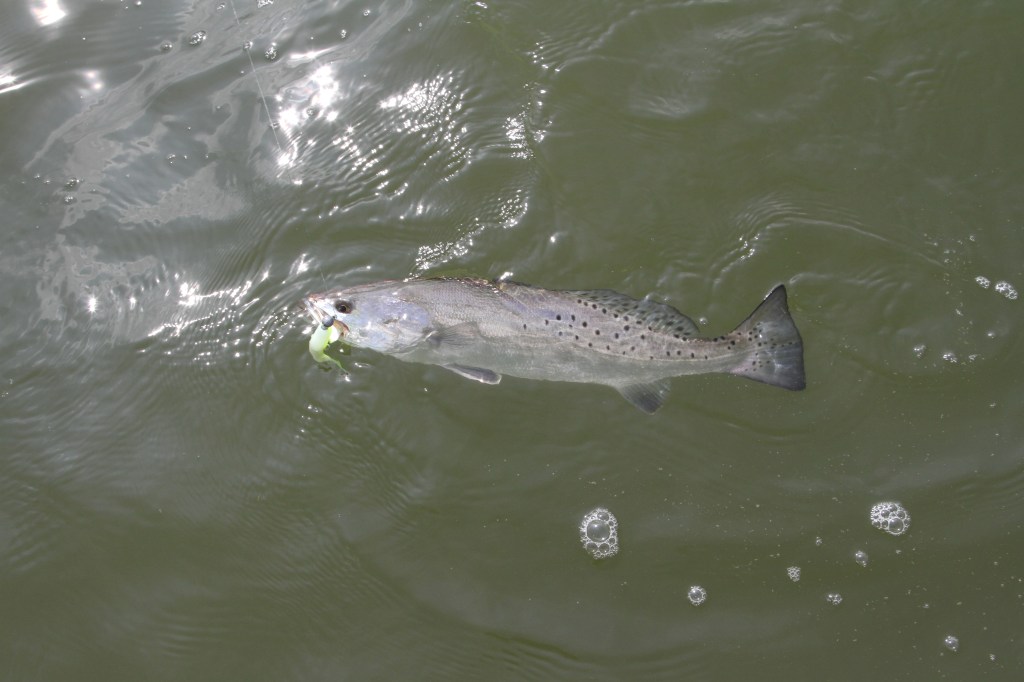
Best baits
Not to sound harsh, but in decent conditions, if you can’t take a bucket of shrimp into the Delta marshes and catch a few reds and trout, the whole fishing thing probably is not for you.
Hook a live shrimp on a 2/0 circle hook set under the horn, suspend it under a popping cork and let it drift past a marsh point, down a Roseau cane edge, or across an oyster reef. It won’t take long.
Some like to tip 3/16- to 1/4-ounce jigs with cut shrimp to add natural appeal to the paddletail or jerkbait bodies. Swimming or slow twitching these “sweetened” baits through likely areas is likely to turn up a mix of redfish, trout, flounder, black drum, and sheepshead.
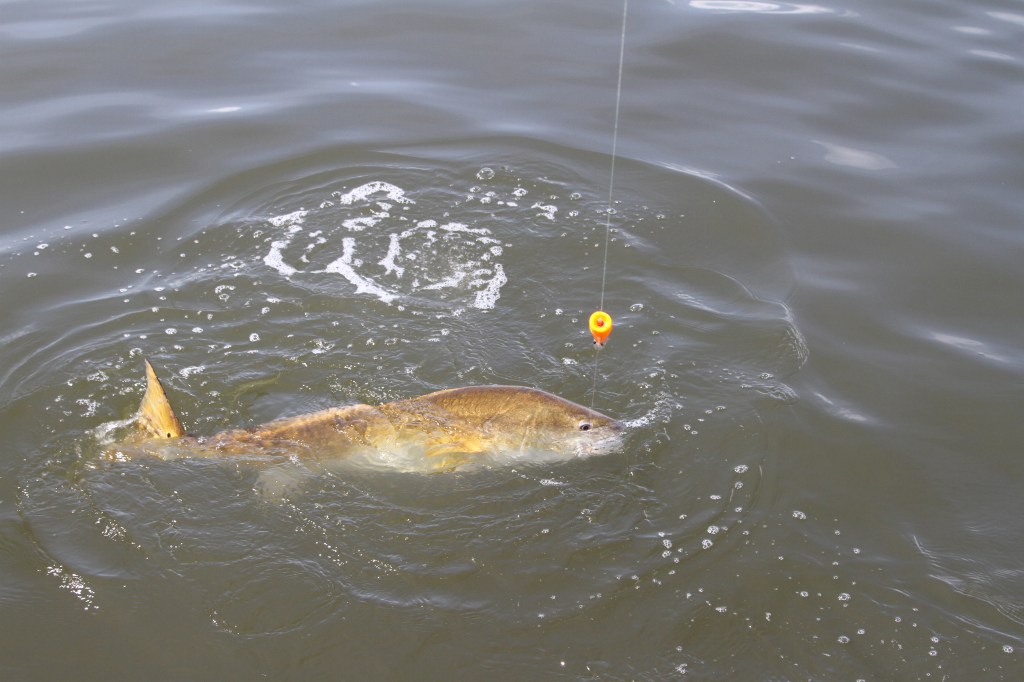
Topwaters offer a ton of fun, especially when you locate a school of bulls outside the marsh. Other favorites include saltwater grade spinnerbaits, swimbaits and bladed jigs. (The darker the water, the more those flashy, vibrating baits help.)
When it doubt, a popping cork with a jig or synthetic shrimp often proves to be the most consistent tool for practically anywhere but super shallow spots. You can cover lots of water and draw in distant fish with that surface commotion. Plus, it’s a can’t-miss strike indicator.
Cork disappears, start reeling.
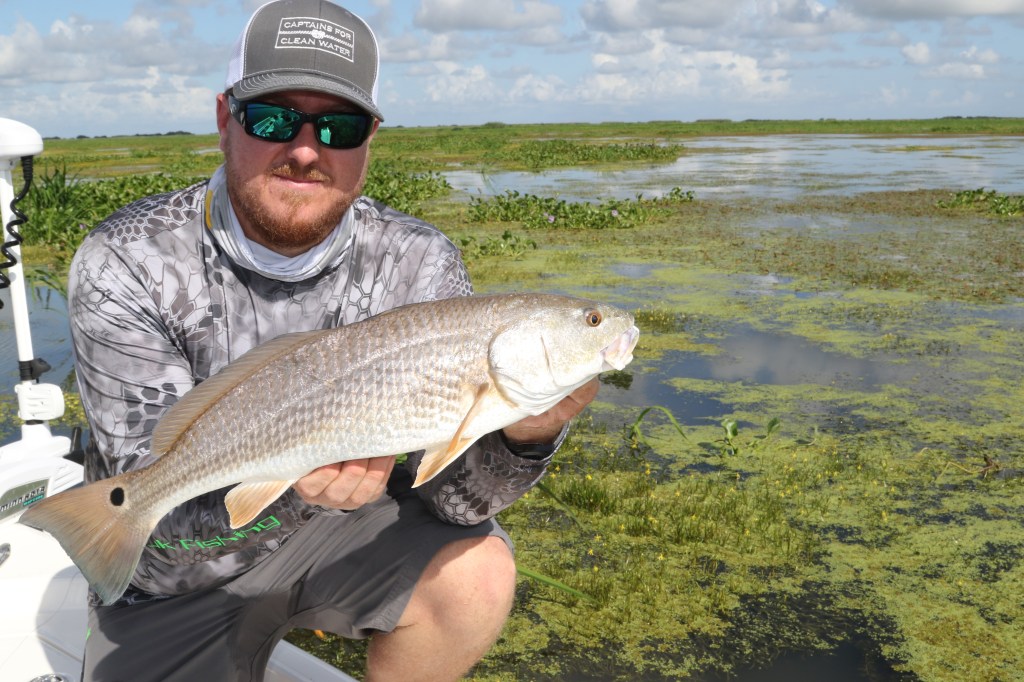
If you go
The Delta holds plenty of marinas and smaller launch facilities for the DIY crowd, but several fishing lodges offer full-service options with meals, comfortable rooms and guided fishing. Do your own research, but here are a few reputable operations:
- Silver Dollar Lodge/Bayou Charters (Delacroix) – captaincharlie.com/
- Cajun Fishing Adventures (Buras): cajunfishingadventures.com/
- Paradise Plus Guide Service (Venice): paradise-plus.com
